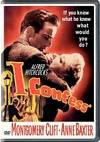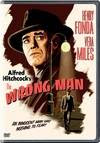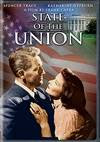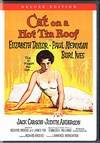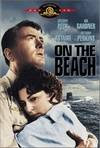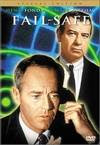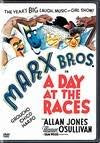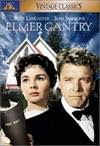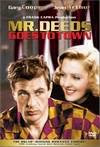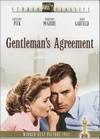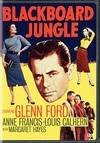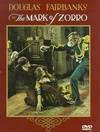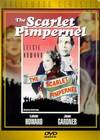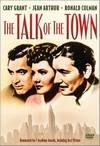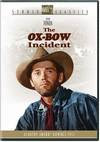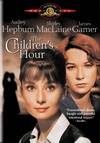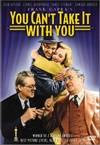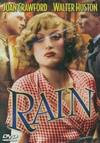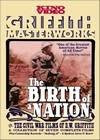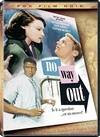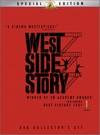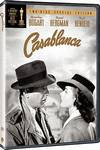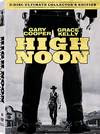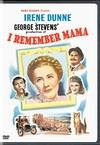The Mark of Zorro
The Scarlet Pimpernel
Spiderman
Americans have enjoyed a love affair with heroes in disguises since colonialists dressed up like Native Americans to attend the original Boston Tea Party. So its no wonder that masked heroes have be portrayed in the cinema since its beginning – and especially the past several years. The films discussed here were chosen because they are excellent representatives of a genre is exciting, romantic and appeals to our collective definition of morality.
I begin with The Mark of Zorro (released in 1920 in black and white). Zorro is one of the most cinematically portrayed figures in history. The only ones that I can think of that may rival Zorro are the British spy James Bond and the Chinese detective Charlie Chan. I should also add that my favorite Zorro portrayers are Antonio Banderas in the 2002 version and its sequels, and George Hamilton in Zorro, The Gay Blade – which is an absolute pleasure to watch because of its witty and uproariously hilarious dialogue. But I am using the silent movie in this discussion to help make my point about the endurance of this popular character.
The plot of this movie is simple. Don Diego Vega, the son of an aristocratic family, returns from Spain, where he attended school, to Los Angeles at a time when California was still part of Mexico. The governor of the area is a tyrant named Alvarado, who can’t seem to control his need to tax the peasants under his authority. Don Diego, who became an accomplished swordsman in Spain, decides he needs to do something to end the tyranny. So, he dons a mask and black cape, names his alter ego Zorro, and proceeds to disrupt Alvarado’s power-crazed plans. No one knows Zorro’s identity except his servant Bernardo. And to further confuse the authorities – and protect his family – Don Diego takes on an effeminate persona. The one problem with Don Diego’s plan is that he falls in love with the daughter of another aristocratic family, Lolita. However by film’s end – and after lots of swashbuckling – Zorro forces Alvarado to give up his office and reveals his true identity to his happily surprised beloved.
The Scarlet Pimpernel (1935, b&w) uses a similar element as the previous film. Although set in France and England during the French Revolution, the hero also uses an effeminate persona in his daily role as Englishman Sir Percy Blakeney. However, unlike Zorro, The Scarlet Pimpernel doesn’t wear a mask but rather uses wigs, makeup, phony noses and other theatrical trappings to save French noblepersons from the Guillotine. Additionally, is interesting to note that there was a previous version of the story filmed during the silent era.
This movie’s plot is much more complicated than the Mask of Zorro storyline. The Scarlet Pimpernel has a network of assistants in both France and England, but his true identity is kept secret from most of the world – including his wife, French-born Lady Marguerite Blakeney, nee St. Just, and the Prince of Wales, who seeks Sir Percy’s advice on clothing despite calling the faux fop “spineless, brainless and useless.” And one thing I particularly like about this story is that Sir Percy augments his fake identity by composing a poem about the Scarlet Pimpernel:
"They seek him here. They seek him there.
Those Frenchies seek him everywhere.
Is he in heaven? Is he in hell?
That damned elusive Pimpernel."
But back to the main plot: Sir Percy and Lady Marguerite are unhappy with each other even though they do love each other. The problem arose when Sir Percy found out that Lady Marguerite played a role in the death of a French nobleman, not realizing that his wife was tricked into it. But apparently, that is what sparked Sir Percy to don the Pimpernel persona. He felt guilty that his wife had a hand in that treachery. And for her part, Lady Marguerite was annoyed at the foppish behavior of her husband – which he hadn’t displayed at the beginning of the marriage.
Then the man who betrayed Lady Marguerite’s trust – Monsieur Chauvelin, a French spy working in England – shows up at the Blakeney estate seeking her help in identifying the Scarlet Pimpernel. Although Lady Marguerite initially refuses, Chauvelin has proof that her brother, who unbeknownst to her is a member of her husband’s secret network, is a traitor to France. The spy threatens to have the brother killed unless Lady Marguerite does as she is told. Chauvelin eventually suspects that Sir Percy is the Pimpernel and returns to France to set a trap for him.
Before leaving on his next rescue mission, Sir Percy and Lady Marguerite discuss their rocky relationship and the wife, still in the dark about her husband, admits she has again helped Chauelin to save her brother. She also explains how she was tricked by Chauvelin the first time. Then after Sir Percy has left, Lady Marguerite discovers her husband’s secret. She and the English side of the Pimpernel network sail to France to warn her husband, but Chauvelin already knows where the Pimpernel plans to rendezvous with the ship that will take him back to England. Lady Marguerite arrives first, Chauvelin shows up and captures her and Sir Percy apparently walks into the trap. But, although Sir Percy wasn’t expecting his wife’s presence, it turns out that Chauvelin is the one who walks into the trap – and the happy couple returns to England.
I decided to add a comic book character to this discussion because of the popularity the genre has enjoyed since the mid 20th Century. And I chose Spiderman (2002, color) because he was my personal favorite. Also, I’m a big Marvel Comics fan because, in my opinion, its characters deal with the kind of everyday problems we all have and they are more introspective than the characters in D.C. Comics.
Peter Parker is a science whiz kid who lives with his Aunt May and Uncle Ben in New York City. His biggest concerns are keeping his grades up, trying to find a way to attract the interest of Mary Jane Parker, making time to hang out with Harry Osborn, his best friend, and working as photographer on his school’s newspaper. During a field trip to a science lab, he is bitten by a radioactive spider and develops arachnid-like powers that include “spider sense” – the ability to perceive danger just before it strikes. Although he decides to create a Spiderman outfit to hide his identity, he initially treats his newfound powers rather frivolously.
Coincidentally, Uncle Ben, who along with Aunt May does not know about Peter’s super powers, lectures his nephew about people’s obligation to society, telling him that “with great powers come great responsibility.” Then one day, Uncle Ben is killed by hoodlums who Peter had previously encountered and ignored. That’s when Peter decides that Spiderman would become a crime fighter. And because his uncle is no longer living, Parker decides to take a job that actually make money. So, he becomes a photographer for the Daily Bugle, a newspaper owned by J. Jonah Jamison – who uses his forum to denounce all super heroes, especially Spiderman. Jamison hires Peter because the photographer always manages to get exclusive photos of Spiderman. Gotta love the irony.
Peter also has great respect for Harry’s father, Norman Osborn, who is a noted scientist. But one of Osborn’s experiments goes haywire, giving him super powers as well – and driving the scientist insane. Osborn then develops an alter ego known as the Green Goblin and proceeds to wreak havoc throughout the city. Spiderman, who is aware of the Green Goblin’s identity, battles the crazed scientist and ultimately defeats, as in kills, him – something Peter hoped to be able to avoid.
Like the previously discussed main characters Spiderman recognized that a wrong was being committed an he took it upon himself to do something about it. I know that this may sound like these guys are vigilantes, the kind of people I warned about in previous writings. But there is one big difference: Zorro, The Scarlet Pimpernel and Spiderman were not acting out of revenge, but rather out of a sense duty and responsibility for their fellow human beings.
Of course, many of history’s masked men have been bad guys who have robbed banks, trains, stage coaches and individuals. And some of these bad guys have hid behind masks and hoods to perpetrate unspeakable evil against people that were wrongly deemed dangerous or just because the bad guys were attracted to cruelty. But the masked and disguised good guys of the cinema have earned our undying affection and filled us with hope that when we are in need of help, there is always the possibility that some real unknown hero will come to our aid.
Friday, March 27, 2009
Wednesday, March 25, 2009
Not So Cold – and Not So Satisfying
13 Women
13 West Street
Nevada Smith
There’s an old saying that revenge is a dish that is best served cold. While I will concede that there is a possibility the aforementioned entrée can be served cold, I seriously doubt it. People seeking revenge are generally angry – and if their anger doesn’t create hatred, then it was born of hatred. Anger and hatred are, to my mind, heated emotions.
I suppose one could argue that revenge can also contain the rather frosty elements of meanness and cruelty. But I would counter that people who are mean and cruel possess a self-hatred that is hidden by an aura of coolness. It’s something like throwing ice on a sizzling frying pan: It may start out frozen, but it ends up as hot steam. In the films discussed here, anger, hatred – and frustration – lead to revenge tinged with cruelty and meanness.
In 13 Women (released in 1932 in black and white), Ursula Georgie is a woman born of mixed parentage, white and Asian, who craves acceptance in the “white world.” She manages to save enough money to go to a California college but is shunned and mistreated by members of a sorority after they learn of her background. She leaves the school without graduating and passes herself off as an astrologist who reads tarot cards and tells horoscopes. Some 20 years later, she actively seeks the revenge she has wanted since she left college – killing off the sorority sisters and members of their families one by one with the help of a man who is in love with her. However, when her attempt to kill the son of the leader of the hated clique is foiled, she throws herself off the back of a moving train, presumably killing herself.
The film 13 West Street (1962, b&w) is about a scientist named Walt Sherill who, while driving home through a seemingly deserted area in Los Angeles, runs out of gas and then is mugged by five hoodlums – some of whom are rather well off. He becomes frustrated with the police investigation of the incident and decides to mete out his own brand of justice on the young men who attacked him. Walt, who hires a private detective to help his crusade, eventually loses his job and incurs the wrath of innocent people who had nothing to do with his mugging. He is also chastised by the police for interfering with their investigation.
The scientist’s search frightens one of the guilty gang members so much that he commits suicide. Now, it’s the gang leader’s turn to seek revenge, which he does by terrorizing Walt’s family. Then, Walt traps the gang leader in his own home and is on the verge of killing him. But for some reason, Walt cools down and decides to turn the gang leader over to the police.
Nevada Smith (1966, color) focuses on another person of mixed parentage. Set in the western United States in the 1890s, Max Sand seeks revenge for the murder of his white father and Native American mother by three drifters. Ironically, Max is urged on in his endeavor by a white woman who is a family friend and whose husband tries to convince him that the quest won’t be worth it.
The three men who Max is seeking split up. It takes a while but Max catches up to the first one and kills him in a knife fight that leaves him gravely wounded. After being nursed back to health by an Indian woman, he learns that another on of his prey is in a Louisiana prison. Max then allows himself to get caught during a holdup, is sent to the prison and befriends the man his has been hunting – even saving his life. After several months, Max and his prey escape from the prison with the help of another Indian woman who has fallen in love with him. But as they make their way through the swamp, the woman gets bitten by the snake. As she is dying, Max reveals his identity to the other man before killing him.
After the escape, Max continues his search for the final killer, named Tom Fitch, and manages to join his gang of outlaws. Fitch, knowing what has happened to his previous two partners, is suspicious of Max and eventually they start shooting at each other. By a river, Max wounds Fitch in each leg but can’t bring himself to kill the helpless man – despite the fact that Fitch pleads with Max to finish the job.
It is interesting to note that in none of these films did the person seeking revenge complete their self-imposed assignments to the satisfaction they sought when they began their quests. Although her own death provided Ursula Georgie with an excuse, Walt Sherill and Max Sand apparently couldn’t bring themselves to ride that train to the end of the line either.
I believe that Walt and Max came to realize that revenge was a very unsatisfying – and unjustifiably cruel – endeavor. It turned them into the people they despised, and it didn’t change what had happened to them or their families. In other words, it was a waste of time.
13 West Street
Nevada Smith
There’s an old saying that revenge is a dish that is best served cold. While I will concede that there is a possibility the aforementioned entrée can be served cold, I seriously doubt it. People seeking revenge are generally angry – and if their anger doesn’t create hatred, then it was born of hatred. Anger and hatred are, to my mind, heated emotions.
I suppose one could argue that revenge can also contain the rather frosty elements of meanness and cruelty. But I would counter that people who are mean and cruel possess a self-hatred that is hidden by an aura of coolness. It’s something like throwing ice on a sizzling frying pan: It may start out frozen, but it ends up as hot steam. In the films discussed here, anger, hatred – and frustration – lead to revenge tinged with cruelty and meanness.
In 13 Women (released in 1932 in black and white), Ursula Georgie is a woman born of mixed parentage, white and Asian, who craves acceptance in the “white world.” She manages to save enough money to go to a California college but is shunned and mistreated by members of a sorority after they learn of her background. She leaves the school without graduating and passes herself off as an astrologist who reads tarot cards and tells horoscopes. Some 20 years later, she actively seeks the revenge she has wanted since she left college – killing off the sorority sisters and members of their families one by one with the help of a man who is in love with her. However, when her attempt to kill the son of the leader of the hated clique is foiled, she throws herself off the back of a moving train, presumably killing herself.
The film 13 West Street (1962, b&w) is about a scientist named Walt Sherill who, while driving home through a seemingly deserted area in Los Angeles, runs out of gas and then is mugged by five hoodlums – some of whom are rather well off. He becomes frustrated with the police investigation of the incident and decides to mete out his own brand of justice on the young men who attacked him. Walt, who hires a private detective to help his crusade, eventually loses his job and incurs the wrath of innocent people who had nothing to do with his mugging. He is also chastised by the police for interfering with their investigation.
The scientist’s search frightens one of the guilty gang members so much that he commits suicide. Now, it’s the gang leader’s turn to seek revenge, which he does by terrorizing Walt’s family. Then, Walt traps the gang leader in his own home and is on the verge of killing him. But for some reason, Walt cools down and decides to turn the gang leader over to the police.
Nevada Smith (1966, color) focuses on another person of mixed parentage. Set in the western United States in the 1890s, Max Sand seeks revenge for the murder of his white father and Native American mother by three drifters. Ironically, Max is urged on in his endeavor by a white woman who is a family friend and whose husband tries to convince him that the quest won’t be worth it.
The three men who Max is seeking split up. It takes a while but Max catches up to the first one and kills him in a knife fight that leaves him gravely wounded. After being nursed back to health by an Indian woman, he learns that another on of his prey is in a Louisiana prison. Max then allows himself to get caught during a holdup, is sent to the prison and befriends the man his has been hunting – even saving his life. After several months, Max and his prey escape from the prison with the help of another Indian woman who has fallen in love with him. But as they make their way through the swamp, the woman gets bitten by the snake. As she is dying, Max reveals his identity to the other man before killing him.
After the escape, Max continues his search for the final killer, named Tom Fitch, and manages to join his gang of outlaws. Fitch, knowing what has happened to his previous two partners, is suspicious of Max and eventually they start shooting at each other. By a river, Max wounds Fitch in each leg but can’t bring himself to kill the helpless man – despite the fact that Fitch pleads with Max to finish the job.
It is interesting to note that in none of these films did the person seeking revenge complete their self-imposed assignments to the satisfaction they sought when they began their quests. Although her own death provided Ursula Georgie with an excuse, Walt Sherill and Max Sand apparently couldn’t bring themselves to ride that train to the end of the line either.
I believe that Walt and Max came to realize that revenge was a very unsatisfying – and unjustifiably cruel – endeavor. It turned them into the people they despised, and it didn’t change what had happened to them or their families. In other words, it was a waste of time.
Tuesday, March 17, 2009
An Imperfect Necessity
The Talk of the Town
The Ox-Bow Incident
A Soldier’s Story
Justice is a necessary and frequently misused – intentionally and unintentionally – concept that requires society to remain constantly aware of its flaws and unrelenting in attempts to minimize undesired consequences. It is a concept that is often plagued by prejudice, hatred, self-serving motives, ignorance of the facts, appeals to emotions, and an array of other problems that prevent justice from being achieved. The movies discussed here examine some of these flaws and the people who try – successfully and unsuccessfully – to expose them before they lead to disaster.
The first film – The Talk of the Town, released in 1942 in black and white – is a romantic comedy that focuses on a love triangle between Leopold Dilg, a man who escapes from jail after being falsely charged with arson and murder; Nora Shelley, a teacher who has known Dilg since they were kids in the town of Sweetwater and believes in his innocence; and Michael Lightcap, a well-respected law professor who is nominated to the U.S. Supreme Court. For purposes of this discussion, the love-triangle subplot will be ignored.
The unpopular Dilg, who has been considered a rabble rouser since his youth, is believed to have set fire to a mill that caused the death of the mill’s foreman, Clyde Bracken. After Dilg injures his leg while escaping from the police, he hides in the attic of a house owned by Nora’s family that is going to be rented to the professor, who is coming to Sweetwater to teach at the law school. After Nora discovers Dilg in the attic and agrees to let him stay there for the night, the professor shows up a day early. Nora talks the professor into allowing her to stay the night and, the next morning, into hiring her to be his cook and secretary.
After the professor has his breakfast, he begins dictating notes about the practice of law to Nora. Dilg then sneaks downstairs to get something to eat and while listening to the professor’s dictation, the opinionated rabble rouser interrupts with his own thoughts on the matter. The quick-thinking Nora tells the professor that Dilg is a gardener named Joseph. Although both men have very different ideas about the law, they become friends with deep respect for each other.
Meanwhile, Dilg’s lawyer, Sam Yates shows up and tries to talk the professor into helping prove his client’s innocence. Yates, who has known the professor since they attended law school together, tells the professor that almost all of the townspeople have a very negative opinion of Dilg and his client’s safety could be in danger. But the professor, who has been approached by Sen. James Boyd and told that he will be nominated by the president to the Supreme Court, refuses Yates’ request. The professor tells the lawyer that he would rather examine the principles of justice than the actual application of those principles.
Eventually, the professor learns his gardener’s true identity and after informing the police, Dilg is again on the run and again manages to elude the police – eventually returning to the attic, unknown to the professor. Nora, however, figures out that the attic is the most likely place where Dilg would hide.
The professor, who has grown very fond of Dilg, and can’t believe that his friend is capable of committing such a crime. Then Nora criticizes the professor for not helping Dilg, calling him an unfeeling man who hides behind his beard. This apparently moves the professor, who decides to conduct his own investigation – and to shave off the beard. During his investigation, the professor discovers that Bracken is still alive and hiding in Boston. As he prepares to go after the foreman, Dilg comes out of hiding and tells the professor he is willing to turn himself into the police. On the way to the police station, however, the professor, Nora and Dilg, who is in the back seat, are stopped by a roadblock. Dilg lies down on the floor as a police officer gets in the front seat, hitching a ride to the next roadblock. During the ride, the officer tells the professor and Nora that the police have an ominous plan to let the townspeople take care of dispensing justice to Dilg. After they drop the officer off, the professor and Nora decide to take Dilg with them to Boston.
The trio finds Bracken in Boston and then return to the professor’s Sweetwater house. As the professor is calling the police, Bracken makes his escape, leaving the professor and Dilg knocked unconscious. When the police arrive, they arrest Dilg and take him to jail. The professor, worried for his friend’s safety, figures out where Bracken is hiding, recaptures him and brings him to the courthouse just as its being overrun by an angry mob bent on taking justice into their own hands. Everyone is stunned to see Bracken alive and to learn that Bracken was the one who set fire to the mill. Bracken also admits that he was acting on orders from the mill’s owner, Andrew Holmes, who wanted to collect the insurance money on the dilapidated building – and who wanted to blame Dilg because the rabble rouser had often publicly criticized him for putting his workers at risk by having them work in the mill. With the case solved, the professor goes on to become a Supreme Court justice.
The Ox-Bow Incident (1943, b&w) is a similar tale with a very different ending. Set in Nevada during the late 1800s, it’s about a town that becomes outraged by news that Frank Kincaid, a popular rancher, has been killed by three men who stole his cattle. While the sheriff goes to investigate, the townspeople form a posse led by Major Tetley, a former Confederate officer who still wears his uniform although the war is long over. The posse includes, among others, Tetley’s son Gerald, a timid young man who is considered a coward by his father; Ma Greer, an old woman with a firm conviction that mob rule is an appropriate form of justice; a black preacher named Sparks; and Gil Carter, a drifter who tags along to bear witness to the posse’s actions.
The posse eventually finds sleeping three men – another rancher named Donald Martin, an off-his-rocker old man and a Mexican – with cattle bearing the brand of the rancher who was reportedly killed. Martin claims that he bought the cattle, but he doesn’t have a bill of sale. The overly suspicious posse refuses to believe Martin and plans to immediately lynch the trio before being talked into waiting until sunrise. During the wait, the rancher writes a letter for his wife and son. At sunrise, the posse – over the objections of the preacher, Gerald Tetley, Gil Carter, his sidekick Art Croft and a few others – hang the three men.
As the posse is riding back to town, the sheriff intercepts them and tells them that his has caught the rustlers and that Kincaid is alive and will recover. The sheriff also tells the posse that those who participated in the lynching with be held responsible for their actions. When the posse returns to town, Gerald is highly critical of his father’s actions. Major Tetley then goes into another room at their home and shoots himself.
Down the street at the saloon, Gil Carter, who winds up with Martin’s letter, reads it aloud so that the rest of the posse can hear it. After reading the letter, which talks about the nature of justice and the affects its miscarriage can have on the conscience, Gil and Art ride off to deliver the letter to Martin’s widow.
A Soldier’s Story focuses on the investigation of the murder of a black sergeant, named Vernon C. Waters. The sergeant was shot just outside an Army base for black soldiers in the Deep South during World War II – when the U.S. military was just as segregated as the rest of the country. The official investigation is conducted by Capt. Richard Davenport, who is sent from Washington, D.C., and is the first black officer any of the soldiers at the base have ever seen. All the other officers on the base are white.
Sgt. Waters was a veteran of World War I and fondly remembers the time he was stationed in France. However, he is an extremely hard taskmaster who constantly rides the men in his company, who are baseball players that have played in the Negro Leagues. The team is very good, winning 19 straight games – just one victory away from earning a chance to play against the New York Yankees. The star of the team is a big carefree, uneducated, guitar-playing private named CJ Memphis, who Sgt. Waters both admires and detests. Sgt. Waters was raised to believe that people like CJ were preventing the black race from achieving the greatness of which it was capable.
After winning their 19th straight game, Sgt. Waters interrupts the team’s celebration and lays into CJ with a flurry of disparaging insults. Although CJ is willing to just take it and expresses sympathy for, and understanding of, the sergeant’s meanness, Pfc. Peterson takes offense. Peterson is a well-spoken, college-educated soldier who on one level agrees with Sgt. Waters but, on another level, just hates the way the sergeant treats CJ. Sgt. Waters plays on Peterson’s anger and manipulates him into a fight, in which the sergeant badly beats the private.
Then, Sgt. Waters stages an incident involving gunfire and arranges to have a gun planted under CJ’s bunk. Despite protests from everyone in the barracks that CJ couldn’t have been involved, Sgt. Waters has CJ taken to the brig. But CJ is claustrophobic and can’t stand staying in his small cell. Distraught by his confinement, CJ hangs himself. After CJ kills himself, Sgt. Waters goes off the deep end, drinking heavily, exhibiting self-loathing and questioning his beliefs about himself and the righteousness of his convictions. Additionally, the team intentionally throws its next game – an act of defiance against Sgt. Waters and respect for CJ.
Although most of the soldiers had believed that Sgt. Waters was killed by the Ku Klux Klan, Capt. Davenport’s investigation leads him in another direction. Davenport also learns that two white officers were involved in beating up a drunken Sgt. Waters the night he was killed and the information was suppressed by the base commander, who didn’t approve of the idea that this black captain should conduct the investigation and insisted the investigation be concluded within a couple of days. Davenport immediately suspected these two white officers and he was supported in this belief by Captain Taylor, the white officer who conducted the initial investigation. But after interviewing the two suspected white officers, who were of a lower rank and were very unhappy with having to answer a black man’s questions, Capt. Davenport also ruled them out as the murders.
After looking at all the facts, Capt. Davenport figures out who the murderer is. The reason the white officers were eliminated from suspicion was because on the night of the murder, the base was under orders that no one was allowed to have live ammunition – except those soldiers who were on sentry duty – and Sgt. Waters had been shot by ammunition from the base. As Capt. Davenport comes to realize who the murderer is, two of the soldiers who were on sentry duty the night Sgt. Waters was killed go AWOL. They are caught and returned to the base, where they are confronted by Capt. Davenport and the murderer, Pfc. Peterson, confesses.
In all three films, innocent people were initially blamed for crimes they did not commit. And in all three films, a rush to judgment placed lives and careers in jeopardy. In one of the films, the revelation of the truth tragically came too late. When I began this discussion, I listed a series of problems with the criminal justice system. Each one of those problems can be exacerbated by the desire to quickly find someone to blame for the crime. And while constitutional law requires that suspects be afforded a speedy trial, all too often we rush headlong into courtrooms and hand down bad verdicts based not on facts but rather on the incomplete and/or inaccurate gathering of information and appeals to emotions.
The television news magazine 60 Minutes recently ran a story about a woman who was raped and then identified the wrong man as the rapist. This woman said she carefully studied her attacker’s face and it was etched into her memory. But 11 years later, DNA technology proved that her eyewitness account was wrong. She and the falsely accused man met and have since become friends, as have their families. The accused and the accuser now travel the country together to warn communities about making a rush to judgment and to encourage criminal investigators to amend the way they conduct their investigations. These three films provide excellent examples of the importance of heeding the message of these two extraordinary allies.
The Ox-Bow Incident
A Soldier’s Story
Justice is a necessary and frequently misused – intentionally and unintentionally – concept that requires society to remain constantly aware of its flaws and unrelenting in attempts to minimize undesired consequences. It is a concept that is often plagued by prejudice, hatred, self-serving motives, ignorance of the facts, appeals to emotions, and an array of other problems that prevent justice from being achieved. The movies discussed here examine some of these flaws and the people who try – successfully and unsuccessfully – to expose them before they lead to disaster.
The first film – The Talk of the Town, released in 1942 in black and white – is a romantic comedy that focuses on a love triangle between Leopold Dilg, a man who escapes from jail after being falsely charged with arson and murder; Nora Shelley, a teacher who has known Dilg since they were kids in the town of Sweetwater and believes in his innocence; and Michael Lightcap, a well-respected law professor who is nominated to the U.S. Supreme Court. For purposes of this discussion, the love-triangle subplot will be ignored.
The unpopular Dilg, who has been considered a rabble rouser since his youth, is believed to have set fire to a mill that caused the death of the mill’s foreman, Clyde Bracken. After Dilg injures his leg while escaping from the police, he hides in the attic of a house owned by Nora’s family that is going to be rented to the professor, who is coming to Sweetwater to teach at the law school. After Nora discovers Dilg in the attic and agrees to let him stay there for the night, the professor shows up a day early. Nora talks the professor into allowing her to stay the night and, the next morning, into hiring her to be his cook and secretary.
After the professor has his breakfast, he begins dictating notes about the practice of law to Nora. Dilg then sneaks downstairs to get something to eat and while listening to the professor’s dictation, the opinionated rabble rouser interrupts with his own thoughts on the matter. The quick-thinking Nora tells the professor that Dilg is a gardener named Joseph. Although both men have very different ideas about the law, they become friends with deep respect for each other.
Meanwhile, Dilg’s lawyer, Sam Yates shows up and tries to talk the professor into helping prove his client’s innocence. Yates, who has known the professor since they attended law school together, tells the professor that almost all of the townspeople have a very negative opinion of Dilg and his client’s safety could be in danger. But the professor, who has been approached by Sen. James Boyd and told that he will be nominated by the president to the Supreme Court, refuses Yates’ request. The professor tells the lawyer that he would rather examine the principles of justice than the actual application of those principles.
Eventually, the professor learns his gardener’s true identity and after informing the police, Dilg is again on the run and again manages to elude the police – eventually returning to the attic, unknown to the professor. Nora, however, figures out that the attic is the most likely place where Dilg would hide.
The professor, who has grown very fond of Dilg, and can’t believe that his friend is capable of committing such a crime. Then Nora criticizes the professor for not helping Dilg, calling him an unfeeling man who hides behind his beard. This apparently moves the professor, who decides to conduct his own investigation – and to shave off the beard. During his investigation, the professor discovers that Bracken is still alive and hiding in Boston. As he prepares to go after the foreman, Dilg comes out of hiding and tells the professor he is willing to turn himself into the police. On the way to the police station, however, the professor, Nora and Dilg, who is in the back seat, are stopped by a roadblock. Dilg lies down on the floor as a police officer gets in the front seat, hitching a ride to the next roadblock. During the ride, the officer tells the professor and Nora that the police have an ominous plan to let the townspeople take care of dispensing justice to Dilg. After they drop the officer off, the professor and Nora decide to take Dilg with them to Boston.
The trio finds Bracken in Boston and then return to the professor’s Sweetwater house. As the professor is calling the police, Bracken makes his escape, leaving the professor and Dilg knocked unconscious. When the police arrive, they arrest Dilg and take him to jail. The professor, worried for his friend’s safety, figures out where Bracken is hiding, recaptures him and brings him to the courthouse just as its being overrun by an angry mob bent on taking justice into their own hands. Everyone is stunned to see Bracken alive and to learn that Bracken was the one who set fire to the mill. Bracken also admits that he was acting on orders from the mill’s owner, Andrew Holmes, who wanted to collect the insurance money on the dilapidated building – and who wanted to blame Dilg because the rabble rouser had often publicly criticized him for putting his workers at risk by having them work in the mill. With the case solved, the professor goes on to become a Supreme Court justice.
The Ox-Bow Incident (1943, b&w) is a similar tale with a very different ending. Set in Nevada during the late 1800s, it’s about a town that becomes outraged by news that Frank Kincaid, a popular rancher, has been killed by three men who stole his cattle. While the sheriff goes to investigate, the townspeople form a posse led by Major Tetley, a former Confederate officer who still wears his uniform although the war is long over. The posse includes, among others, Tetley’s son Gerald, a timid young man who is considered a coward by his father; Ma Greer, an old woman with a firm conviction that mob rule is an appropriate form of justice; a black preacher named Sparks; and Gil Carter, a drifter who tags along to bear witness to the posse’s actions.
The posse eventually finds sleeping three men – another rancher named Donald Martin, an off-his-rocker old man and a Mexican – with cattle bearing the brand of the rancher who was reportedly killed. Martin claims that he bought the cattle, but he doesn’t have a bill of sale. The overly suspicious posse refuses to believe Martin and plans to immediately lynch the trio before being talked into waiting until sunrise. During the wait, the rancher writes a letter for his wife and son. At sunrise, the posse – over the objections of the preacher, Gerald Tetley, Gil Carter, his sidekick Art Croft and a few others – hang the three men.
As the posse is riding back to town, the sheriff intercepts them and tells them that his has caught the rustlers and that Kincaid is alive and will recover. The sheriff also tells the posse that those who participated in the lynching with be held responsible for their actions. When the posse returns to town, Gerald is highly critical of his father’s actions. Major Tetley then goes into another room at their home and shoots himself.
Down the street at the saloon, Gil Carter, who winds up with Martin’s letter, reads it aloud so that the rest of the posse can hear it. After reading the letter, which talks about the nature of justice and the affects its miscarriage can have on the conscience, Gil and Art ride off to deliver the letter to Martin’s widow.
A Soldier’s Story focuses on the investigation of the murder of a black sergeant, named Vernon C. Waters. The sergeant was shot just outside an Army base for black soldiers in the Deep South during World War II – when the U.S. military was just as segregated as the rest of the country. The official investigation is conducted by Capt. Richard Davenport, who is sent from Washington, D.C., and is the first black officer any of the soldiers at the base have ever seen. All the other officers on the base are white.
Sgt. Waters was a veteran of World War I and fondly remembers the time he was stationed in France. However, he is an extremely hard taskmaster who constantly rides the men in his company, who are baseball players that have played in the Negro Leagues. The team is very good, winning 19 straight games – just one victory away from earning a chance to play against the New York Yankees. The star of the team is a big carefree, uneducated, guitar-playing private named CJ Memphis, who Sgt. Waters both admires and detests. Sgt. Waters was raised to believe that people like CJ were preventing the black race from achieving the greatness of which it was capable.
After winning their 19th straight game, Sgt. Waters interrupts the team’s celebration and lays into CJ with a flurry of disparaging insults. Although CJ is willing to just take it and expresses sympathy for, and understanding of, the sergeant’s meanness, Pfc. Peterson takes offense. Peterson is a well-spoken, college-educated soldier who on one level agrees with Sgt. Waters but, on another level, just hates the way the sergeant treats CJ. Sgt. Waters plays on Peterson’s anger and manipulates him into a fight, in which the sergeant badly beats the private.
Then, Sgt. Waters stages an incident involving gunfire and arranges to have a gun planted under CJ’s bunk. Despite protests from everyone in the barracks that CJ couldn’t have been involved, Sgt. Waters has CJ taken to the brig. But CJ is claustrophobic and can’t stand staying in his small cell. Distraught by his confinement, CJ hangs himself. After CJ kills himself, Sgt. Waters goes off the deep end, drinking heavily, exhibiting self-loathing and questioning his beliefs about himself and the righteousness of his convictions. Additionally, the team intentionally throws its next game – an act of defiance against Sgt. Waters and respect for CJ.
Although most of the soldiers had believed that Sgt. Waters was killed by the Ku Klux Klan, Capt. Davenport’s investigation leads him in another direction. Davenport also learns that two white officers were involved in beating up a drunken Sgt. Waters the night he was killed and the information was suppressed by the base commander, who didn’t approve of the idea that this black captain should conduct the investigation and insisted the investigation be concluded within a couple of days. Davenport immediately suspected these two white officers and he was supported in this belief by Captain Taylor, the white officer who conducted the initial investigation. But after interviewing the two suspected white officers, who were of a lower rank and were very unhappy with having to answer a black man’s questions, Capt. Davenport also ruled them out as the murders.
After looking at all the facts, Capt. Davenport figures out who the murderer is. The reason the white officers were eliminated from suspicion was because on the night of the murder, the base was under orders that no one was allowed to have live ammunition – except those soldiers who were on sentry duty – and Sgt. Waters had been shot by ammunition from the base. As Capt. Davenport comes to realize who the murderer is, two of the soldiers who were on sentry duty the night Sgt. Waters was killed go AWOL. They are caught and returned to the base, where they are confronted by Capt. Davenport and the murderer, Pfc. Peterson, confesses.
In all three films, innocent people were initially blamed for crimes they did not commit. And in all three films, a rush to judgment placed lives and careers in jeopardy. In one of the films, the revelation of the truth tragically came too late. When I began this discussion, I listed a series of problems with the criminal justice system. Each one of those problems can be exacerbated by the desire to quickly find someone to blame for the crime. And while constitutional law requires that suspects be afforded a speedy trial, all too often we rush headlong into courtrooms and hand down bad verdicts based not on facts but rather on the incomplete and/or inaccurate gathering of information and appeals to emotions.
The television news magazine 60 Minutes recently ran a story about a woman who was raped and then identified the wrong man as the rapist. This woman said she carefully studied her attacker’s face and it was etched into her memory. But 11 years later, DNA technology proved that her eyewitness account was wrong. She and the falsely accused man met and have since become friends, as have their families. The accused and the accuser now travel the country together to warn communities about making a rush to judgment and to encourage criminal investigators to amend the way they conduct their investigations. These three films provide excellent examples of the importance of heeding the message of these two extraordinary allies.
Wednesday, March 11, 2009
When Brats Attack
The Magnificent Ambersons
Mildred Pierce
The Children’s Hour
Raising children is perhaps the most important assignment a person takes on in his or her life. However, the assignment comes with no manual that can guarantee success. Parenting does not involve a proven scientific formula. In truth, it is more of an art. People generally learn about parenting from their parents, adjusting their style to enhance or discard those elements of which they either approved or disapproved. And often, no matter how much you want to be a good parent, no matter how hard you try to provide your children with a loving and stable environment, no matter how you try to make life better for them that it was for you, and no matter how hard you try to protect them from the dangers of life or from its bad influences or even from themselves, sometimes your children will do mean, hurtful and selfish things that will produce disastrous results. Additionally, your children may not always appreciate your efforts.
Take the case of George Amberson Minafer in The Magnificent Ambersons (released in 1942 in black and white). Georgie, as he was called by his uncle, Jack Amberson, and his aunt, Fanny Minafer, was the pampered child of one of Indianapolis’ leading families during the waning years of the 19th century. George is such a brat that the entire town expresses the sentiment that it can’t wait until he gets his “comeuppance.” I don’t remember the movie mentioning how the Ambersons amassed their vast wealth – which I assumed was made by Major Anderson, the family patriarch – but in the early stages of the story, their fortune was augmented by Jack’s prestigious job as a congressman and Wilbur Minafer’s business dealings.
George’s mother Isabel Amberson marries Wilbur despite being in love with a carefree youth named Eugene Morgan. Heartbroken, Eugene leaves town. While he is away Isabel and Wilbur produce George, who grows up believing that the world revolves around his family. For his part, Eugene marries and fathers a daughter, Lucy. Eugene, who has become a widower and owns an automobile company, returns to Indianapolis some 20 years later with Lucy. And now that Wilbur has also passed away, Eugene wants to rekindle his romance with Isabel. But George, who ironically finds himself smitten with Lucy, is appalled that his mother would have anything to do with Eugene and creates an insurmountable obstacle to their plans to be together. The best examples of George’s stubbornness are his refusal to accept the automobile as the innovation that will replace the horse and buggy, and his willingness to sacrifice his relationship with Lucy to prevent his mother from marrying Eugene.
Isabel, giving in to her son’s wishes, decides to leave the country. During her travels she becomes deathly ill and returns to the Amberson mansion. The ever-petulant brat then refuses to allow Eugene to visit his mother on her death bed, even though Isabel expresses her desire to see the man she has loved for decades.
Eventually, the Amberson fortune dwindles away to nothing with a big assist from George's extravagance. Then, the penniless brat is hospitalized after being involved in an accident with an automobile. Lucy, who never stopped loving George despite his treatment of her father, visits him with Eugene and the two lovers reconcile. And to his credit, Eugene forgives George for his selfishness in regards to Isabel.
In Mildred Pierce (1945, b&w), the title character is a divorced parent who buys a restaurant and makes a fortune. However, Mildred’s purpose is not so much to make her life comfortable as it is to spare her daughter, Veda, from the hardships she faced growing up in an apparently lower middle class family – something that Veda chides her for at a critical point in the movie.
There are three men in Mildred’s life – her former husband, Bert; her longtime friend and financial advisor, Wally; and Monte, a self-serving playboy who is obviously after Mildred’s money. As the relationship between Mildred and Monte develops, the cad also makes a play for Veda. The brat then gets it into her head that Monte wants to marry her. After Veda is disabused of the idea by Monte, who says he plans on marrying her mother, the two-timer winds up dead.
Mildred – the loving, protective mother to the end – first tries to frame Wally for the murder and then confesses to killing Monte herself. But the police, with Bert’s help, sort things out and arrest Veda for the dastardly deed.
The Children’s Hour (1961, b&w), tells the story of how the founders of a girls school have their lives turned upside down by a manipulative little liar who lashes out when she doesn’t get her way.
Karen Wright and Martha Dobie met in college, became inseparable friends and opened a boarding school for girls in a small (I want to say New England, but I’m not sure) town. Karen is engaged to Dr. Joe Cardin, who is the school’s physician and also works at the town hospital. The only other school employee is Mrs. Lily Mortar, Martha’s aunt and an out-of-work actress who teaches the social graces. Whenever Dr. Joe is around, Martha seems to become grumpy, for lack of a better word, and while others notice it, she does not.
One day, Karen is disciplining a pre-teen problem child named Mary Tilford for lying. Afterwards, Mary eavesdrops on a conversation between Lily and Martha in which the aunt brings up Martha’s mood change when Joe is around and calls Martha’s relationship with Karen “unnatural.” Furious, Martha fires Lily.
Mary then runs away from the school and goes to the home of her grandmother, Mrs. Amelia Tilford, who is the richest woman in town and also is Mary’s legal guardian and Joe’s aunt. When asked why she left, the brat tells her grandmother about the conversation she overheard, emphasizing the word “unnatural” and implying that the two teachers are having a homosexual affair. To substantiate the allegation, the brat coerces a schoolmate named Rosalie to lie about what she saw and heard at the school. Mary is able to get Rosalie to do her bidding because the brat found Rosalie with a bracelet that that had been reported as missing by another girl. Rosalie apparently is a thief who fears being found out. Mrs. Tilford then calls all the other parents and they all take their children out of the school.
After being told the reason, Karen, Martha and Joe confront Mrs. Tilford and deny the charges. But they can’t get Mary to recant and Rosalie, threatened with exposure, continues to back the brat’s story. Karen and Martha sue Mrs. Tilford for slander, but to no avail. And Joe loses his position at the hospital because he refuses to sever his association with Karen and Martha. Joe then goes to Karen and Martha and asks them to leave town with him and they can all start over somewhere else. While Martha goes into the kitchen to fix dinner, Karen forces Joe to admit that the thought that Karen and Martha might be lovers has crossed his mind. Karen then breaks off the relationship and sends Joe away. When Martha returns, she asks about Joe’s disappearance. Karen tells her what happened and Martha is devastated.
Then, Mrs. Tilford shows up and tells the two women that she has discovered that Mary was lying and had forced Rosalie to back her up. She offers to pay the entire amount sought in the libel suit but the two friends turn her down and tell her to leave them alone. After Mrs. Tilford leaves, Martha has an epiphany and comes to the realization that she in fact does have feelings for Karen that are more than just friendship – although she has never acted on them. Karen is very sympathetic and asks Martha to accompany her on a walk. Distraught, Martha refuses and goes upstairs to her room. While on her walk, Karen gets an eerie feeling that something is wrong and rushes back to the house, goes up to Martha’s room and finds that her friend has committed suicide.
The brats in all three movies displayed heart-wrenchingly devastating behavior, and each for the same reason – to selfishly get their way. One denied happiness to his mother, another commited murder, and the lies of the youngest of the three led to someone else's suicide. And, on top of that, none of them showed any real appreciation for the wonderful environments that their parents and guardians provided.
Please understand that I am not setting myself up as an ideal parent: My children have informed me that my parenting skills leave a lot to be desired. But I feel I must point something out about the warnings these three movies have for us as parents and as a society.
While it is admirable to want to give children advantages that we may have lacked when we were their age, we need to realize that giving them everything they want is not necessarily a good thing. Too many people – children and adults, alike – have developed the attitude that “I want what I want and I want it now” is acceptable, even desired, behavior. Too many of us don’t teach our children about patience and hard work. We don’t teach them about sharing and caring about how what they do affect the lives of others. As I see it, the current financial crisis that has engulfed the planet is a direct result of this failure to successfully teach our children about these things.
Many of us have chased the American dream of home ownership without honestly looking at our current ability to pay for it and having the patience to wait until we do. Like the aforementioned brats, “We want what we want and we want it now. Why should we have to wait until we actually can afford it?”
Our banks, financial institutions and the people who run them have allowed selfishness and greed to influence their actions, taking advantage of those who are too impatient to save for what they want – and collecting ungodly amounts of money for their own satisfaction without concern about those among us who are losing our jobs, who are living on the street, who can’t afford to see a doctor, who have lost our life savings and retirement funds. What does the Ponzi Scheme King need with the $50 billion he collected? Are you telling me that CEOs need multimillion dollar yearly bonuses to enjoy life? And what about the people who actually did the work that created that money? Don't they deserve bonuses, as well? This selfishness is the behavior of brats who can’t seem to get enough and don’t want to share their good fortune with the rest of society. And these brats obviously didn’t think about, or care about, the devastation they were causing.
All of us should try to take advantage of the lessons that are taught in the movies discussed above – and understand that sometimes parenting requires making your children temporarily unhappy. By doing so, you are teaching your children that disappointment is an unavoidable part of life – and that learning to cope with disappointment will not only make their lives better, but also the lives of the rest of us.
Mildred Pierce
The Children’s Hour
Raising children is perhaps the most important assignment a person takes on in his or her life. However, the assignment comes with no manual that can guarantee success. Parenting does not involve a proven scientific formula. In truth, it is more of an art. People generally learn about parenting from their parents, adjusting their style to enhance or discard those elements of which they either approved or disapproved. And often, no matter how much you want to be a good parent, no matter how hard you try to provide your children with a loving and stable environment, no matter how you try to make life better for them that it was for you, and no matter how hard you try to protect them from the dangers of life or from its bad influences or even from themselves, sometimes your children will do mean, hurtful and selfish things that will produce disastrous results. Additionally, your children may not always appreciate your efforts.
Take the case of George Amberson Minafer in The Magnificent Ambersons (released in 1942 in black and white). Georgie, as he was called by his uncle, Jack Amberson, and his aunt, Fanny Minafer, was the pampered child of one of Indianapolis’ leading families during the waning years of the 19th century. George is such a brat that the entire town expresses the sentiment that it can’t wait until he gets his “comeuppance.” I don’t remember the movie mentioning how the Ambersons amassed their vast wealth – which I assumed was made by Major Anderson, the family patriarch – but in the early stages of the story, their fortune was augmented by Jack’s prestigious job as a congressman and Wilbur Minafer’s business dealings.
George’s mother Isabel Amberson marries Wilbur despite being in love with a carefree youth named Eugene Morgan. Heartbroken, Eugene leaves town. While he is away Isabel and Wilbur produce George, who grows up believing that the world revolves around his family. For his part, Eugene marries and fathers a daughter, Lucy. Eugene, who has become a widower and owns an automobile company, returns to Indianapolis some 20 years later with Lucy. And now that Wilbur has also passed away, Eugene wants to rekindle his romance with Isabel. But George, who ironically finds himself smitten with Lucy, is appalled that his mother would have anything to do with Eugene and creates an insurmountable obstacle to their plans to be together. The best examples of George’s stubbornness are his refusal to accept the automobile as the innovation that will replace the horse and buggy, and his willingness to sacrifice his relationship with Lucy to prevent his mother from marrying Eugene.
Isabel, giving in to her son’s wishes, decides to leave the country. During her travels she becomes deathly ill and returns to the Amberson mansion. The ever-petulant brat then refuses to allow Eugene to visit his mother on her death bed, even though Isabel expresses her desire to see the man she has loved for decades.
Eventually, the Amberson fortune dwindles away to nothing with a big assist from George's extravagance. Then, the penniless brat is hospitalized after being involved in an accident with an automobile. Lucy, who never stopped loving George despite his treatment of her father, visits him with Eugene and the two lovers reconcile. And to his credit, Eugene forgives George for his selfishness in regards to Isabel.
In Mildred Pierce (1945, b&w), the title character is a divorced parent who buys a restaurant and makes a fortune. However, Mildred’s purpose is not so much to make her life comfortable as it is to spare her daughter, Veda, from the hardships she faced growing up in an apparently lower middle class family – something that Veda chides her for at a critical point in the movie.
There are three men in Mildred’s life – her former husband, Bert; her longtime friend and financial advisor, Wally; and Monte, a self-serving playboy who is obviously after Mildred’s money. As the relationship between Mildred and Monte develops, the cad also makes a play for Veda. The brat then gets it into her head that Monte wants to marry her. After Veda is disabused of the idea by Monte, who says he plans on marrying her mother, the two-timer winds up dead.
Mildred – the loving, protective mother to the end – first tries to frame Wally for the murder and then confesses to killing Monte herself. But the police, with Bert’s help, sort things out and arrest Veda for the dastardly deed.
The Children’s Hour (1961, b&w), tells the story of how the founders of a girls school have their lives turned upside down by a manipulative little liar who lashes out when she doesn’t get her way.
Karen Wright and Martha Dobie met in college, became inseparable friends and opened a boarding school for girls in a small (I want to say New England, but I’m not sure) town. Karen is engaged to Dr. Joe Cardin, who is the school’s physician and also works at the town hospital. The only other school employee is Mrs. Lily Mortar, Martha’s aunt and an out-of-work actress who teaches the social graces. Whenever Dr. Joe is around, Martha seems to become grumpy, for lack of a better word, and while others notice it, she does not.
One day, Karen is disciplining a pre-teen problem child named Mary Tilford for lying. Afterwards, Mary eavesdrops on a conversation between Lily and Martha in which the aunt brings up Martha’s mood change when Joe is around and calls Martha’s relationship with Karen “unnatural.” Furious, Martha fires Lily.
Mary then runs away from the school and goes to the home of her grandmother, Mrs. Amelia Tilford, who is the richest woman in town and also is Mary’s legal guardian and Joe’s aunt. When asked why she left, the brat tells her grandmother about the conversation she overheard, emphasizing the word “unnatural” and implying that the two teachers are having a homosexual affair. To substantiate the allegation, the brat coerces a schoolmate named Rosalie to lie about what she saw and heard at the school. Mary is able to get Rosalie to do her bidding because the brat found Rosalie with a bracelet that that had been reported as missing by another girl. Rosalie apparently is a thief who fears being found out. Mrs. Tilford then calls all the other parents and they all take their children out of the school.
After being told the reason, Karen, Martha and Joe confront Mrs. Tilford and deny the charges. But they can’t get Mary to recant and Rosalie, threatened with exposure, continues to back the brat’s story. Karen and Martha sue Mrs. Tilford for slander, but to no avail. And Joe loses his position at the hospital because he refuses to sever his association with Karen and Martha. Joe then goes to Karen and Martha and asks them to leave town with him and they can all start over somewhere else. While Martha goes into the kitchen to fix dinner, Karen forces Joe to admit that the thought that Karen and Martha might be lovers has crossed his mind. Karen then breaks off the relationship and sends Joe away. When Martha returns, she asks about Joe’s disappearance. Karen tells her what happened and Martha is devastated.
Then, Mrs. Tilford shows up and tells the two women that she has discovered that Mary was lying and had forced Rosalie to back her up. She offers to pay the entire amount sought in the libel suit but the two friends turn her down and tell her to leave them alone. After Mrs. Tilford leaves, Martha has an epiphany and comes to the realization that she in fact does have feelings for Karen that are more than just friendship – although she has never acted on them. Karen is very sympathetic and asks Martha to accompany her on a walk. Distraught, Martha refuses and goes upstairs to her room. While on her walk, Karen gets an eerie feeling that something is wrong and rushes back to the house, goes up to Martha’s room and finds that her friend has committed suicide.
The brats in all three movies displayed heart-wrenchingly devastating behavior, and each for the same reason – to selfishly get their way. One denied happiness to his mother, another commited murder, and the lies of the youngest of the three led to someone else's suicide. And, on top of that, none of them showed any real appreciation for the wonderful environments that their parents and guardians provided.
Please understand that I am not setting myself up as an ideal parent: My children have informed me that my parenting skills leave a lot to be desired. But I feel I must point something out about the warnings these three movies have for us as parents and as a society.
While it is admirable to want to give children advantages that we may have lacked when we were their age, we need to realize that giving them everything they want is not necessarily a good thing. Too many people – children and adults, alike – have developed the attitude that “I want what I want and I want it now” is acceptable, even desired, behavior. Too many of us don’t teach our children about patience and hard work. We don’t teach them about sharing and caring about how what they do affect the lives of others. As I see it, the current financial crisis that has engulfed the planet is a direct result of this failure to successfully teach our children about these things.
Many of us have chased the American dream of home ownership without honestly looking at our current ability to pay for it and having the patience to wait until we do. Like the aforementioned brats, “We want what we want and we want it now. Why should we have to wait until we actually can afford it?”
Our banks, financial institutions and the people who run them have allowed selfishness and greed to influence their actions, taking advantage of those who are too impatient to save for what they want – and collecting ungodly amounts of money for their own satisfaction without concern about those among us who are losing our jobs, who are living on the street, who can’t afford to see a doctor, who have lost our life savings and retirement funds. What does the Ponzi Scheme King need with the $50 billion he collected? Are you telling me that CEOs need multimillion dollar yearly bonuses to enjoy life? And what about the people who actually did the work that created that money? Don't they deserve bonuses, as well? This selfishness is the behavior of brats who can’t seem to get enough and don’t want to share their good fortune with the rest of society. And these brats obviously didn’t think about, or care about, the devastation they were causing.
All of us should try to take advantage of the lessons that are taught in the movies discussed above – and understand that sometimes parenting requires making your children temporarily unhappy. By doing so, you are teaching your children that disappointment is an unavoidable part of life – and that learning to cope with disappointment will not only make their lives better, but also the lives of the rest of us.
Thursday, March 5, 2009
Silly vs. Serious: Searching for the Life’s Purpose
You Can’t Take It With You
The Seventh Seal
A Thousand Clowns
I saw my first foreign, subtitled film as my college career was coming to a close. Of course, I saw the Japanese monster films when I was much younger, but they were dubbed. I also had never been asked – assigned, actually – to figure out exactly what the film was trying to say. Previously, I had been forced to do this with books, but I never thought to transfer this skill to films. I enjoyed looking for the hidden meaning in books. Movies, however were just a visual – and mindless – entertainment. But I found out differently, and learned that it was as much fun looking for the inner meaning in films as is was looking for the inner meaning in books.
This brings me to The Seventh Seal (released in 1957 in black and white). The Swedish made film is about Antonius Block, a knight who is returning from the Crusades with his squire, Jon. During his trip home, he encounters Death, who has come to claim his body. But Block isn’t ready to journey to the hereafter and challenges Death to a game of chess. The game has serious consequences: If Block wins, he gets to continue his life; if he loses, Death takes it. Death agrees and the journey home continues with the game played during the evenings.
During the journey, Block and Jon are joined by several travelers seeking the protection of the knight. Among the wayfarers are a couple, named Jof and Mia, and their baby boy. Jof works as a fool with a traveling troupe and is constantly doing silly things to entertain his fellow travelers. Then one night, he sees Block and Death engaged in their game of chess. He rushes back to Mia and they flee from the encampment. The next day, everyone who stayed with Block is seen following the knight to their deaths. Jof, Mia and their child are the only ones to escape Death’s grip.
What the movie said to me was that people who take life too seriously tend to live those lives in fear – primarily the fear of death. The serious Block spent the entire film trying to ward off the inevitable, playing a game he couldn’t win against an apparent grand master. But silly Jof and his family avoided the fate of the rest of the entourage. From this I gleaned that the film was telling us to enjoy our lives and to not take things too seriously.
But I also noticed something else about this film – something possibly spiritual. Although I believe in God and in life after death, I do not consider myself a particularly religious person and I very, very seldom attend church – except for job fairs, I haven’t been inside one for more than a decade. However, it seemed to me that Jof and Mia represent Joseph and Mary – after all, their names are very similar – and their child, the baby Jesus. Block was returning from the Crusades, where he killed infidels in the name of God. Jof, on the other hand, spent his life bringing joy to others. Block dies; Jof lives. Could the movie be making a value judgment? Could it be a parable about Christ’s promise of everlasting life?
Other examples offered for this silly vs. serious discussion are the films You Can’t Take It With You (1938, b&w) and A Thousand Clowns (1965, b&w).
You Can’t Take It With You is a romantic comedy that focuses on an impending marriage between Tony Kirby, the son of a well-to-do family of snobs, and Alice Sycamore, the granddaughter of a zany, could-care-less-about-money clan headed by “Grandpa” Martin Vanderhof. Interestingly, this family employs two black servants who are happy to work for free, are treated with respect and depicted as slightly less crazy than the other members of the household, which includes a man who builds fireworks in the basement that, as you might expect, eventually and accidentally go off. But I digress.
Aside from the different-sides-of-town nature of the romance between Tony and his secretary, Alice, there is also a conflict between Grandpa and Anthony Kirby, Tony’s father. The millionaire, pursuing a lucrative business deal, has bought every house in the neighborhood except Grandpa’s – and Grandpa ain’t selling because he loves his home and being able to have his large family around him. When the families meet to discuss the upcoming nuptials, Anthony Kirby and his wife Mary are quite put off by the shenanigans of Grandpa’s family.
Sensing that her family is not perceived as good enough by the elder Kirbys, Alice breaks off the wedding and leaves home. When Tony finds out, he tells his parents that he can’t forgive them for their treatment of Alice and he doesn’t want to see them again. Grandpa, meanwhile, is heartbroken about Alice’s departure and agrees to sell the house so that the family can join her.
Anthony, who is also disturbed by the death of a business competitor, receives a visit from Grandpa, who lets his anger get the best of him and chastises the millionaire, telling him he may have money but he has no true friends – the kind that would say nice things about him at his funeral. But Grandpa, being Grandpa, soon apologizes for his tirade.
When Alice learns that Grandpa has sold the house, she returns to talk him out of it. Tony also shows up, but is again rebuffed by Alice. Then Anthony appears and asks Grandpa to help him win back the affection of his son. Then in another example of the power of music, Grandpa suggests that Anthony get out the harmonica he had given him when he apologized and the two play a duet together. Their silly little ditty cheers up everyone, Anthony agrees to sell the house back to Grandpa and, as they say, they all live happily ever after.
A Thousand Clowns begins with Murray, a former script writer for a children’s television show who now begins every morning by yelling advice to the world, takes his 12-year-old nephew, Nick, to see a terrible sight – hundreds of people on their way to work. But looming on the horizon is a visit from two of the city’s social services workers who are concerned about Nick’s upbringing.
During the course of the interview at Murray’s disheveled apartment, the two social workers, Albert and Sandra, have a disagreement on how to handle the situation. Albert, who apparently has a relationship with Sandra, leaves to visit another client. Sandra stays and, during the course of the day, falls in love with Murray. Also, she warns him that if he doesn’t get a job, he will lose custody of Nick.
With the help of his brother, Arnold, a show business talent agent, Nick spends the next day going on interviews for jobs, none of which appeals to him despite the fact that they are all suited for his particular brand of silliness. Upon returning home without work, Sandra, who has redecorated up the apartment, decides that this is not the man for her and leaves.
Murray is then visited by Leo, his former employer on the Chuckles the Chipmunk show. Leo, who actually doesn’t get along with children, begs Murray to take his job back. During the visit, Leo, who has brought Nick a life-size cardboard “statue” of himself in his Chuckles costume, receives some harsh criticism from the boy. Then, Sandra returns to pick up some papers she left there earlier and decides to stick around until Murray finally agrees to take the job so that he can keep Nick and Sandra. The movie ends with Murray yelling more advice to empty streets before becoming part of the site that he finds so terrible, crowds of people on their way to work.
These three movies say that one needs to maintain the proper balance between silly and serious. The fool in The Seventh Seal recognizes the seriousness of the situation his family is in and removes them from it. Grandpa in You Can’t Take It With You is able to convince the millionaire that an overly serious pursuit of wealth can have unhappy consequences for his family. And Murray learns in A Thousand Clowns that sometimes he has to be serious if he wants to keep and protect those he loves.
While I agree with those conclusions, I can’t help but feel that the balance between silly and serious should tilt more toward silly than serious. My wife can vouch for that.
The Seventh Seal
A Thousand Clowns
I saw my first foreign, subtitled film as my college career was coming to a close. Of course, I saw the Japanese monster films when I was much younger, but they were dubbed. I also had never been asked – assigned, actually – to figure out exactly what the film was trying to say. Previously, I had been forced to do this with books, but I never thought to transfer this skill to films. I enjoyed looking for the hidden meaning in books. Movies, however were just a visual – and mindless – entertainment. But I found out differently, and learned that it was as much fun looking for the inner meaning in films as is was looking for the inner meaning in books.
This brings me to The Seventh Seal (released in 1957 in black and white). The Swedish made film is about Antonius Block, a knight who is returning from the Crusades with his squire, Jon. During his trip home, he encounters Death, who has come to claim his body. But Block isn’t ready to journey to the hereafter and challenges Death to a game of chess. The game has serious consequences: If Block wins, he gets to continue his life; if he loses, Death takes it. Death agrees and the journey home continues with the game played during the evenings.
During the journey, Block and Jon are joined by several travelers seeking the protection of the knight. Among the wayfarers are a couple, named Jof and Mia, and their baby boy. Jof works as a fool with a traveling troupe and is constantly doing silly things to entertain his fellow travelers. Then one night, he sees Block and Death engaged in their game of chess. He rushes back to Mia and they flee from the encampment. The next day, everyone who stayed with Block is seen following the knight to their deaths. Jof, Mia and their child are the only ones to escape Death’s grip.
What the movie said to me was that people who take life too seriously tend to live those lives in fear – primarily the fear of death. The serious Block spent the entire film trying to ward off the inevitable, playing a game he couldn’t win against an apparent grand master. But silly Jof and his family avoided the fate of the rest of the entourage. From this I gleaned that the film was telling us to enjoy our lives and to not take things too seriously.
But I also noticed something else about this film – something possibly spiritual. Although I believe in God and in life after death, I do not consider myself a particularly religious person and I very, very seldom attend church – except for job fairs, I haven’t been inside one for more than a decade. However, it seemed to me that Jof and Mia represent Joseph and Mary – after all, their names are very similar – and their child, the baby Jesus. Block was returning from the Crusades, where he killed infidels in the name of God. Jof, on the other hand, spent his life bringing joy to others. Block dies; Jof lives. Could the movie be making a value judgment? Could it be a parable about Christ’s promise of everlasting life?
Other examples offered for this silly vs. serious discussion are the films You Can’t Take It With You (1938, b&w) and A Thousand Clowns (1965, b&w).
You Can’t Take It With You is a romantic comedy that focuses on an impending marriage between Tony Kirby, the son of a well-to-do family of snobs, and Alice Sycamore, the granddaughter of a zany, could-care-less-about-money clan headed by “Grandpa” Martin Vanderhof. Interestingly, this family employs two black servants who are happy to work for free, are treated with respect and depicted as slightly less crazy than the other members of the household, which includes a man who builds fireworks in the basement that, as you might expect, eventually and accidentally go off. But I digress.
Aside from the different-sides-of-town nature of the romance between Tony and his secretary, Alice, there is also a conflict between Grandpa and Anthony Kirby, Tony’s father. The millionaire, pursuing a lucrative business deal, has bought every house in the neighborhood except Grandpa’s – and Grandpa ain’t selling because he loves his home and being able to have his large family around him. When the families meet to discuss the upcoming nuptials, Anthony Kirby and his wife Mary are quite put off by the shenanigans of Grandpa’s family.
Sensing that her family is not perceived as good enough by the elder Kirbys, Alice breaks off the wedding and leaves home. When Tony finds out, he tells his parents that he can’t forgive them for their treatment of Alice and he doesn’t want to see them again. Grandpa, meanwhile, is heartbroken about Alice’s departure and agrees to sell the house so that the family can join her.
Anthony, who is also disturbed by the death of a business competitor, receives a visit from Grandpa, who lets his anger get the best of him and chastises the millionaire, telling him he may have money but he has no true friends – the kind that would say nice things about him at his funeral. But Grandpa, being Grandpa, soon apologizes for his tirade.
When Alice learns that Grandpa has sold the house, she returns to talk him out of it. Tony also shows up, but is again rebuffed by Alice. Then Anthony appears and asks Grandpa to help him win back the affection of his son. Then in another example of the power of music, Grandpa suggests that Anthony get out the harmonica he had given him when he apologized and the two play a duet together. Their silly little ditty cheers up everyone, Anthony agrees to sell the house back to Grandpa and, as they say, they all live happily ever after.
A Thousand Clowns begins with Murray, a former script writer for a children’s television show who now begins every morning by yelling advice to the world, takes his 12-year-old nephew, Nick, to see a terrible sight – hundreds of people on their way to work. But looming on the horizon is a visit from two of the city’s social services workers who are concerned about Nick’s upbringing.
During the course of the interview at Murray’s disheveled apartment, the two social workers, Albert and Sandra, have a disagreement on how to handle the situation. Albert, who apparently has a relationship with Sandra, leaves to visit another client. Sandra stays and, during the course of the day, falls in love with Murray. Also, she warns him that if he doesn’t get a job, he will lose custody of Nick.
With the help of his brother, Arnold, a show business talent agent, Nick spends the next day going on interviews for jobs, none of which appeals to him despite the fact that they are all suited for his particular brand of silliness. Upon returning home without work, Sandra, who has redecorated up the apartment, decides that this is not the man for her and leaves.
Murray is then visited by Leo, his former employer on the Chuckles the Chipmunk show. Leo, who actually doesn’t get along with children, begs Murray to take his job back. During the visit, Leo, who has brought Nick a life-size cardboard “statue” of himself in his Chuckles costume, receives some harsh criticism from the boy. Then, Sandra returns to pick up some papers she left there earlier and decides to stick around until Murray finally agrees to take the job so that he can keep Nick and Sandra. The movie ends with Murray yelling more advice to empty streets before becoming part of the site that he finds so terrible, crowds of people on their way to work.
These three movies say that one needs to maintain the proper balance between silly and serious. The fool in The Seventh Seal recognizes the seriousness of the situation his family is in and removes them from it. Grandpa in You Can’t Take It With You is able to convince the millionaire that an overly serious pursuit of wealth can have unhappy consequences for his family. And Murray learns in A Thousand Clowns that sometimes he has to be serious if he wants to keep and protect those he loves.
While I agree with those conclusions, I can’t help but feel that the balance between silly and serious should tilt more toward silly than serious. My wife can vouch for that.
Subscribe to:
Posts (Atom)
